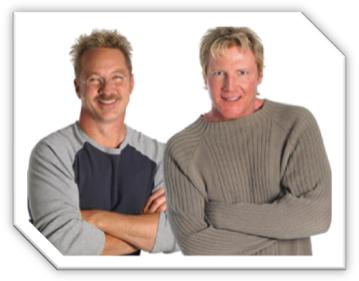 We have used this space to discuss the Kodak failure to innovate with digital, while instead holding fast to their traditional film business. A recent New York Times blog asked how a small start-up called Instagram could create a new application for photography, while Kodak, Nikon, Olympus, Canon and many others did not. And that leads to a discussion of disruptive technologies and how companies are profoundly challenged to go in different directions.
We have used this space to discuss the Kodak failure to innovate with digital, while instead holding fast to their traditional film business. A recent New York Times blog asked how a small start-up called Instagram could create a new application for photography, while Kodak, Nikon, Olympus, Canon and many others did not. And that leads to a discussion of disruptive technologies and how companies are profoundly challenged to go in different directions.
The blog post quoted Kodak board member, Michael Hawley, who pointed to a cultural problem within big companies:
“It’s a little like asking why Hasbro didn’t do Farmville, or why McDonald’s didn’t start Whole Foods.”
Gary T. DiCamillo, the former CEO of Polaroid (which went out of business), put it this way:
“We knew we needed to change the fan belt, but we couldn’t stop the engine. And the reason we couldn’t stop the engine was that instant film was the core of the financial model of this company. It drove all the economics.”
 It’s not easy to navigate any major company in 2012 because consumer demand powered by technology continues to run amok.
It’s not easy to navigate any major company in 2012 because consumer demand powered by technology continues to run amok.
Brand after brand is caught off-guard by Internet disruption and the power of what Brian Solis calls Generation-C – or the connected consumer. The dividing lines are not demographic or economic. Gen-C is about people living through social networks powered by mobile devices.
So I wonder about the radio business. The industry as a whole – or one of its biggest companies – could have invented pay radio or what became satellite radio. But that would have been disruptive to the core business.
Same thing with Pandora. Any radio company could have developed the technology to create custom radio stations that would algorithmically select successive songs, but none did.
Perhaps part of the challenge, like in Kodak’s case, is cultural. Still, how many broadcasters have a true R&D engine that is charged with inventing two ways to create and disseminate audio content? Instead, it is easier for smaller, agile entrepreneurs to come along and innovate instead.
You have to give Clear Channel credit for iHeartRadio, an invention that is very un-radio like in its uniqueness and its potential to disrupt broadcast radio and the ratings it needs to exist. The bet is that by building a major digital infrastructure of audio and other content, iHeartRadio can generate the revenue that is diminishing from Clear Channel’s traditional broadcast assets.
In our insanely fast-changing techno-media culture, of course, all bets are off. None of us can fix the jet plane while it’s flying at 35,000 feet. But you can invest in your bread and butter, because no matter how the platforms change, evolve, or become extinct, the content that drives them will always be in demand. Perhaps R&D in radio is more about finding and recruiting talent than it is exploring new technologies.
 The system that made it possible for a couple of green DJs in Birmingham, Alabama, to become fixtures for 25 years in Los Angeles is rusty and ineffective. No longer can radio companies reliably look to smaller markets for “the next Mark & Brian.” It doesn’t have to be that way if radio companies were investing in their farm teams – their future.
The system that made it possible for a couple of green DJs in Birmingham, Alabama, to become fixtures for 25 years in Los Angeles is rusty and ineffective. No longer can radio companies reliably look to smaller markets for “the next Mark & Brian.” It doesn’t have to be that way if radio companies were investing in their farm teams – their future.
But as Facebook just acknowledged – and the Times blog points out – if you can’t beat ‘em, buy ‘em.
Some may look at $1 billion for Instagram as a bad move, but given that Google, Apple, or Twitter didn’t invent it, taking it off the market and integrating it into the Facebook infrastructure makes sense. You know what happens when you monkey with the fan blade while a 900 million person engine is running.
Solving problems via acquisition has to be an option for legacy companies and industries where the culture is not conducive to innovating new products that might be considered disruptive to the heritage product.
What would Pandora have cost five years ago?
What kind of financial damage will it incur five years from now?
- What To Do If Your Radio Station Goes Through A Midlife Crisis - April 25, 2025
- A 2020 Lesson?It Could All Be Gone In A Flash - April 24, 2025
- How AI Can Give Radio Personalities More…PERSONALITY - April 23, 2025




Generation C … I like the moniker but changing the fan belt? At last count Kodak has 17,100 employees and InstaGram 13 when acquired, 12-programmers and one PR person. Could Kodak have set aside 12 jobs to think about how consumers share pictures? InstaGram sold for $1-billion. Kodak’s market cap this morning is $71-million.
Change doesn’t need an army just a leader. Change is coming from Generation C. If you are old enough to recall the TV program “F Troop” then you know how it looks to the generation that will soon run things.
Even mid-size radio groups have 100+ employees and nobody allowed time to think differently. Time to change channels.
Radio – particularly large radio companies have enough assets that they can develop the Prius and Volt while making and selling SUVs and midsized cars.
I have always found the post consolidation lack of beta testing astounding. What’s the cost/benefit sweet spot for voice tracking/syndication/research/marketing/contesting/sales compensation, ect.? The only way to find out is to test different scenarios over time and market sizes and analyze/assess the results. If this has been done by anyone, they’ve kept it amazingly quiet.
I’m a little surprised that Wall Street hasn’t demanded it…
Bob & Steve, you are essentially saying the same thing – big broadasters have the resources and the personnel to innovate. Few have. As the post notes, the problem often has less to do with money or even human resources but culture – certainly the case with Kodak. That cannibalization issue always looms large. Thanks to both of you for taking the time to comment.
Hi Fred –
It’s seems fruitless sometimes to search for solutions when as an industry we don’t fully understand the problem or want to admit there is one (just hire a couple of teenagers and we’ll be fine). If anyone in our industry is not familiar with Clay Christensen then they need to watch this video, “How to escape the innovators dilemma”, and then read his book. It will be the first step in creating a strategy that has a chance of succeeding. This is the best 14 minutes you will spend today.
https://techcrunch.com/2012/04/02/keen-on-clay-christensen-how-to-escape-the-innovators-dilemma-tctv/
Or this white paper from HBR – “How P&G Tripled Its Innovation Success Rate”. It explains how Procter & Gamble created a “new-growth factory”-a network of novel structures and capabilities to rapidly shepherd new products and even business models from inception to market.
https://archive.harvardbusiness.org/cla/web/pl/product.seam?c=18228&i=18230&cs=40b0d52f8060e76e36e8371e3310d9ba
Then finally watch Gary V one more time as he talks about “ninja units” as a way to get things done.
https://www.youtube.com/watch?v=FubJDOEs-4c&feature=related
There is a common thread in these examples… separate “units” to address new challenges. In the words of Jack Nicholson in “A Few Good Men”…”You want answers? You want answers?” This is the answer…just maybe not the answer anyone wants to hear.
Yes, Mike, and as some of the other commenters have pointed out, the bigger radio companies have the capabilities of getting this done. Techsurvey8 uncovers some of the consumer needs/problems that radio could be “hired” to address – but we have to put ourselves in a position to walk the walk. Christensen lays it out uniquely and very well. Thanks for providing more context to our conversation.